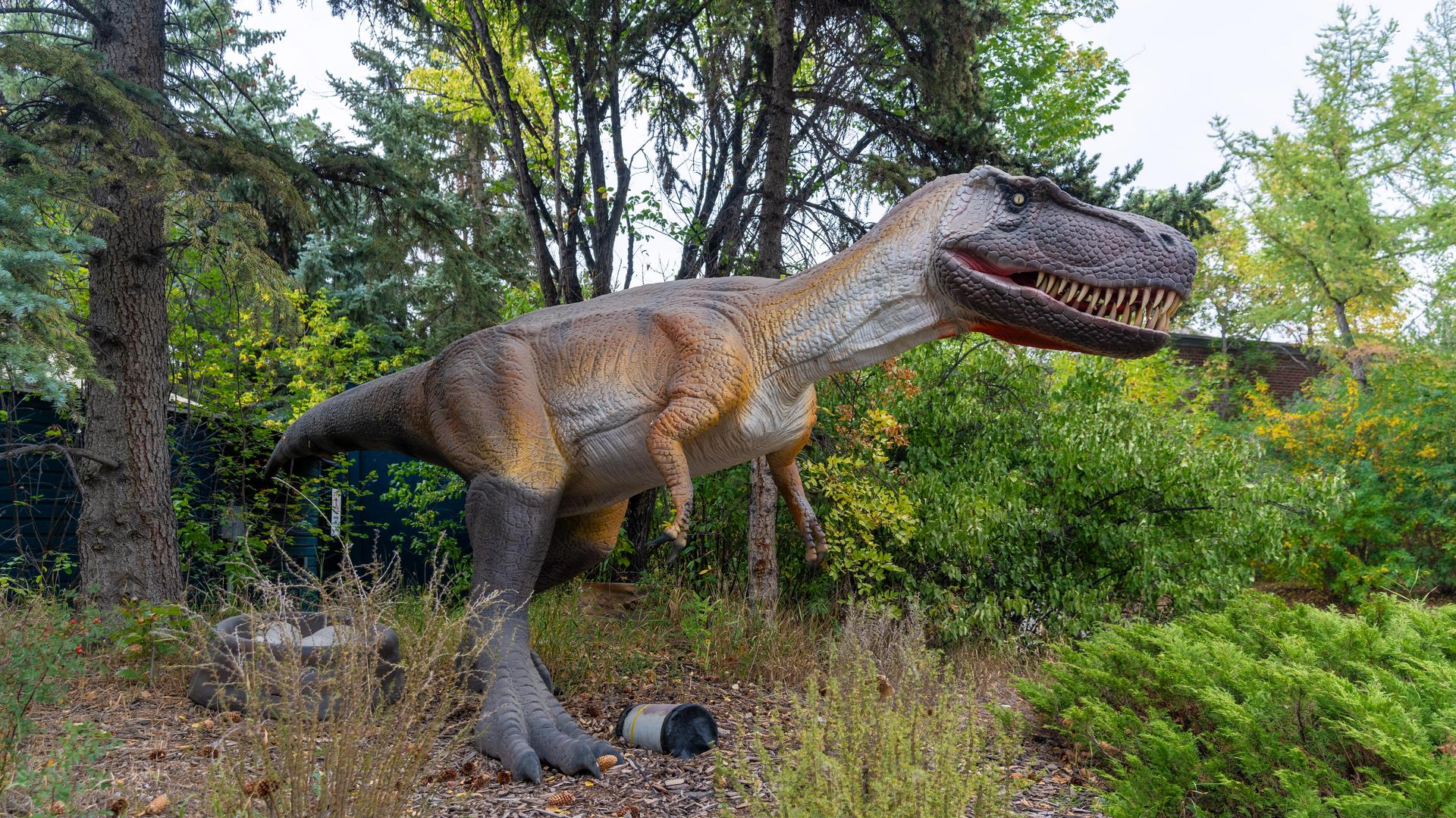From different styles of adaptations to different styles of families, this high-energy program explores the creation of fossils while looking closely at dinosaur diversity, parental care, and the food chain. Through classroom and tour components, students will discuss animal homes, fossilization, and how dinosaurs adapted to their environments.
Length: 60 minutes
Program times: 10:00 a.m., 11:15 a.m., 12:45 p.m.
Maximum students: 27
Cost:
Register Now
Curricular Connections
Kindergarten
Earth Systems:
- Demonstrate respect while interacting with environments.
- Identify natural and constructed objects in surrounding environments.
- Use the senses to make observations about environments.
Matter/Energy:
- Observe and imitate how animals can move.
- Identify ways that humans and other animals can move.
Grade 1
Living Systems:
- Observe and describe similarities and differences between plants and animals.
- Determine how a local environment meets the basic needs of plants and animals.
Matter/Energy:
- Observe and describe the direction, pathway, and speed of objects or animals.
Grade 2
Living Systems:
- Identify similarities between offspring and parents.
- Represent the lifecycle of various plants and animals.
- Discuss and compare lifecycles of various plants and animals.
Earth Systems:
- Discuss how the various components of Earth interact to support life.
- Identify landforms that are found locally in Alberta.
- Compare various landforms on Earth’s surface.
Cross-Curricular Connections
Kindergarten:
- Demonstrate a variety of listening behaviours (ELA).
- Participate in group discussions (ELA).
- Compare the weight of two objects directly (Math).
- Describe the size of an object in relation to another object, using comparative language (Math).
- Describe the size of an object in relation to a purpose or need, using comparative language (Math).
Grade 1:
- Contribute to discussions as a listener and speaker (ELA).
- Describe cycles of time encountered in daily routines and nature (Math).
- Describe observable changes that indicate a cycle of time (Math).
- Recognize cycles encountered in daily routines and nature (Math).
- Investigate equal and unequal quantities, including using a balance model (Math).
Grade 2:
- Contribute to discussions as a listener and speaker (ELA).
- Describe a quantity as less than, greater than, or equal to another quantity (Math).
On-Site Program Information and FAQ

